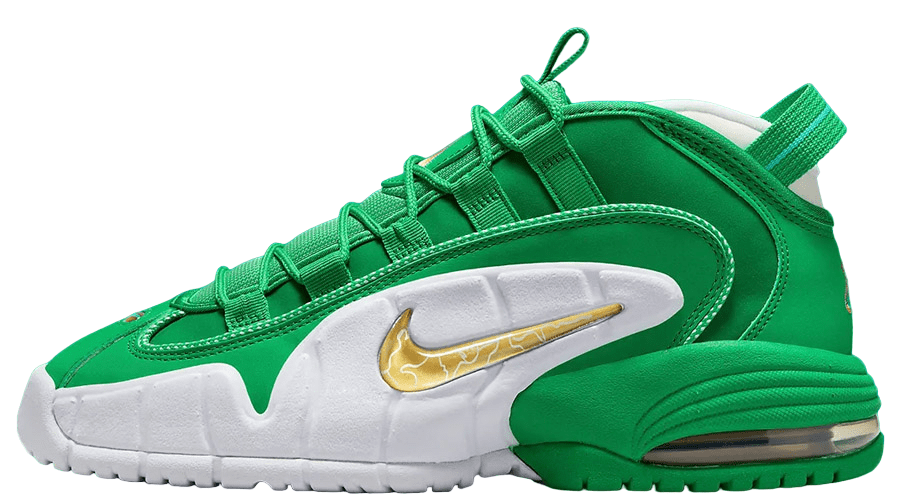Air Max Penny 1
Penny Hardaway, a renowned NBA superstar during the 1990s, gained acclaim for his remarkable basketball abilities and his stylish approach to the game. In 1995, Nike paid tribute to his exceptional talent by launching his first-ever signature shoe, known as the Air Max Penny 1. Fast forward 27 years, and this iconic sneaker is once again in the spotlight, thanks to exciting collaborations with Social Status and the resurgence of its original ‘Orlando’ color scheme. Let’s delve deeper into the history of Penny’s inaugural signature footwear.
The year 1995 held significant importance in the realm of basketball footwear, as the Air Max Penny 1 made its debut alongside legendary releases like the Air Jordan 11 and Shawn Kemp’s Kamikaze II. Penny, who had swiftly ascended to stardom after joining the Orlando Magic, had previously sported various Nike models, including the Air Swift, Air Prevail, and even an Air Jordan 9 PE. Nevertheless, the introduction of the Air Max Penny 1 just before the 1995-96 season marked a pivotal moment for both Nike Basketball and Penny’s illustrious career.
Transforming a shoe into a cultural icon necessitates an exceptional marketing campaign, and the Air Max Penny 1 certainly delivered on that front. It introduced the world to “Lil’ Penny,” a comical alter ego of Penny Hardaway, voiced by the talented Chris Rock. Lil’ Penny played a central role in the shoe’s marketing, notably in the famous ‘Locker Room’ commercial that featured playful banter between Lil’ Penny and Penny himself, leaving a lasting impact in the advertising landscape. Interestingly, Penny’s teammate Shaquille O’Neal, who endorsed Reebok, engaged in a humorous rivalry with Lil’ Penny, a rivalry humorously portrayed in Shaq’s Reebok advertisements.
Nike’s print advertising campaign for the Air Max Penny 1, part of the ‘Phone Ad’ series, also left a significant impression. These advertisements featured a minimalist design characterized by a white backdrop, a prominent Swoosh, and a phone number for consumers to call and learn more about the shoe. This approach added to the shoe’s mystique and contributed to its marketing triumph.
Designed by Nike Basketball architect Eric Avar, the Air Penny incorporated design elements inspired by Penny Hardaway’s unique playing style. It incorporated Air Max2 cushioning in the heel and Zoom Air in the forefoot to provide a combination of speed and strength. The shoe’s distinctive lateral Phylon support wing offered lightweight support for swift movements on the court, giving it a bold and asymmetrical appearance unlike any other sneaker available at the time.
Showing the single result
